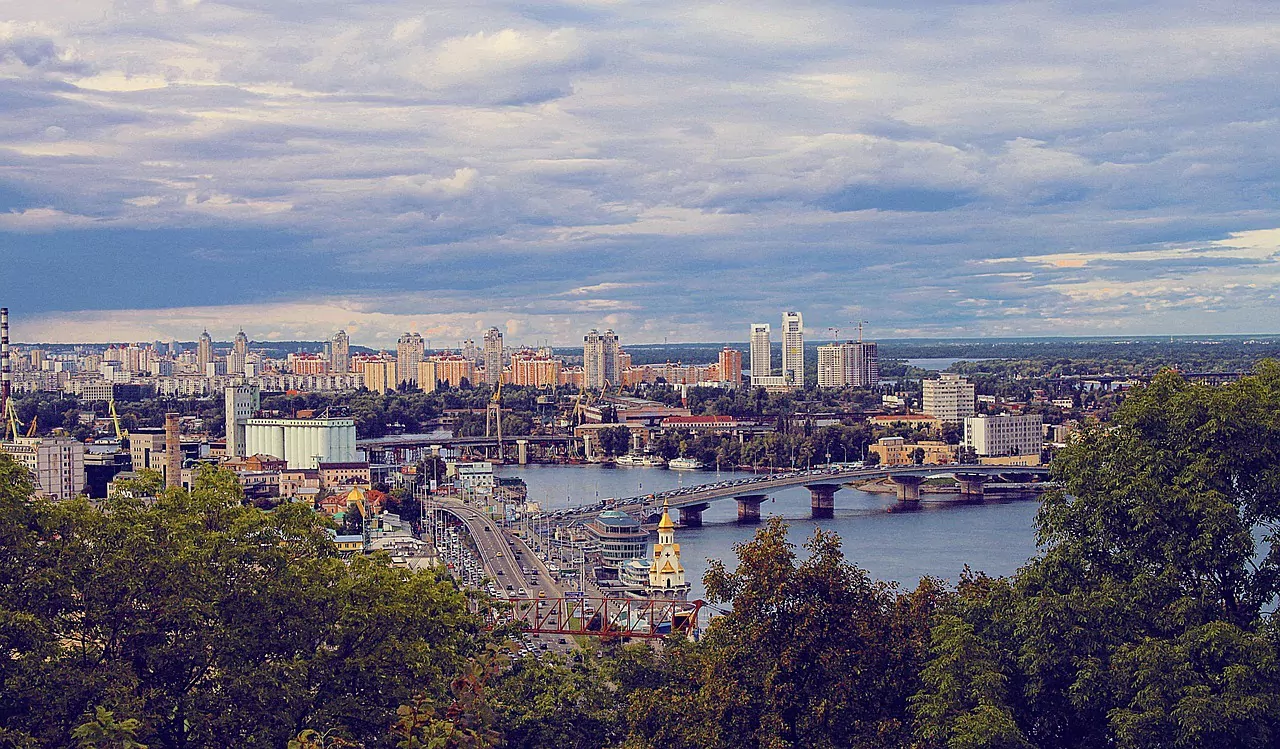Ukraine has warned that Russia has “almost finalized” the military build-up that could be used for an offensive against the country, raising fears that Moscow could launch an invasion at any time, CNN reported hours ago. According to the latest report from the Ukrainian Defence Ministry, Russia has so far deployed more than 127,000 troops to the Russian-Ukrainian border. How badly could economic relations between Romania and Ukraine be affected in the event of a conflict? Economedia has drawn up an overview of business between the two countries.
Urmărește mai jos producțiile video ale Economedia:
- articolul continuă mai jos -
The Romanian community is the third-largest ethnic group in Ukraine and economic relations are not to be neglected. In the first eight months of the year, Romania traded more than $1.5bn with Ukraine, energy companies are keeping an eye on our northern neighbors, we have joint EU programs worth tens of millions of euros and more than 1,000 Ukrainian companies in Romania.
How business between the two countries looks like? What do we import, what do we export? Over 1,000 Ukrainian companies in Romania
The latest data from the State Statistical Service of Ukraine show that in January-August 2021 the volume of trade in goods between Ukraine and Romania amounted to $1.51 billion, up from $1.2 billion in January-September 2020. Of this amount, Ukrainian exports to Romania account for $992.65 million (January-September 2020 – $760.14 million), and imports – $524.82 million (January-September 2020 – $444.36 million). The trade balance amounted to $467.82 million in favor of Ukraine, according to data presented by the Ukrainian Embassy in Romania.
The main groups of exports from Ukraine to Romania were ferrous metals, accounting for 16.6% of the total export volume, machinery, appliances, electrical equipment – with 15.7%, ores, slag, and ash – 14.9%, wood and wood products – 7.9%, mineral fuels – 6.7% and footwear – 4.4%.
The main groups of imports from Romania to Ukraine were: means of land transport – 19% of the total export volume, machinery, appliances, electrical equipment – 15.7%, aircraft – 9.0%, plastic – 6.4%, wood and wood products – 5.8%, mineral fuels – 5.7%, nuclear reactors – 5.3%.
The latest data from the Ministry of Foreign Affairs shows that as of 31 October 2020, 1,004 Romanian-Ukrainian joint ventures were registered in Romania, with a total invested capital of $112.55 million. Ukraine thus ranks 31st among foreign investors, according to data from the National Trade Registry Office.
However, there is no data on the number of Romanian-Ukrainian companies registered in Ukraine.
Romania interested in the Ukrainian energy sector
Romania and Ukraine have also collaborated in the fight against the COVID-19 pandemic, a presentation by the Polish Institute of International Affairs shows. In June 2020, the Romanian government offered €1.7 million for the purchase of medical supplies. In addition, together with Poland and 11 EU members, in January 2021 it prompted the European Commission to include Eastern Partnership countries in the EU’s vaccine assistance program. Earlier, in April 2021, Romania was supported by the Ukrainian Air Force in transporting medical equipment from China.
The Polish Institute of International Affairs analysis points out that despite limited political contacts, Romania and Ukraine want to strengthen trade and social relations. In 2020, the two countries have opened a ferry crossing on the Danube, but also plan to build a bridge across the Tisa. Despite the increase in trade, in 2019 Romanian exports to Ukraine amounted to only €616 million (0.9% of total exports) and imports from Ukraine totaled only €931 million (1.1%).
Modest Romanian investments in Ukraine
Romanian investments in Ukraine totaled only €17 million (for comparison, in Moldova they are €299 million). In order to strengthen this area of cooperation, the prime ministers at the time, Florin Cîțu and Denys Shmyhal, agreed by phone in February 2021 to resume the work of the Joint Economic Committee. In the last 13 years, it has met only twice, and its 2017 agreements on banking, law enforcement and business infrastructure cooperation have not yet been implemented.
Romania is becoming an increasingly important partner for Ukraine’s energy sector, the Polish analysis shows. In the EU the country has, after the Netherlands, the largest gas resources and mineral extraction from newly discovered Black Sea deposits. In 2019, state operators agreed to sell and store Romanian gas stocks in Ukraine. In February 2021, Cittu and Shmyhal announced future discussions between ministries and operators on Romania’s participation in the further diversification of gas supply and the planned synchronisation of Ukraine’s electricity grid with the EU.
As Economedia wrote here just on Wednesday, the Romanian company Transgaz and the Ukrainian gas transmission system operator (LLC Gas OTS) started a project whereby, from 2026, 290 million cubic meters of gas (3.06 million kWh) will be able to be “pushed” from our transmission system to that of our neighbors. The period coincides with the extraction of gas from the Black Sea.
Energy companies eye Ukraine
Ukraine is a country of interest to energy companies.
In April 2020, according to Profit.ro, Romanian oil company Expert Petroleum Solutions SRL, a partner with OMV Petrom, founded by two former managers of global well services giant Schlumberger and controlled by a Luxembourg-registered legal entity, signed a 15-year contract with UkrGasVydobuvannya, Ukraine’s largest state-owned natural gas producer, to increase production from several mature perimeters in Ukraine, for which it competed with a consortium from China.
In February 2021, Ukraine’s Naftogaz Group signed a memorandum of understanding for cooperation with the largest integrated energy company in Southeast Europe – Romania-based OMV Petrom. Naftogaz and OMV Petrom will seek to establish joint gas exploration and production projects in Ukraine, according to a Ukrainian company statement quoted by Economica.net.
An energy collaboration would benefit both countries, a Contributors analysis shows. “In each country, there is a national gas or electricity company. If there is political will, those companies will respect that will. If we take the first point of the Ukrainian proposal for cooperation to extract hydrocarbons from the Black Sea, things get interesting. Interconnecting gas pipelines would really make Romania an energy hub: Ukraine would eventually run out of Russian gas and Romania could supply it. And for electricity things are similar for both directions of transmission. Could Romania be interested in natural gas storage capacities in Ukraine? After some analysis, we may find out! Knowing the interests of the eastern flank states (part in the vicinity of Ukraine) that are members of the I3M (Poland and the Baltic States) it is possible to create an interesting and strong common market, adding to this the existence of liquefied natural gas terminals in Poland and Ukrainian pipelines, which could bring American natural gas to Romania. Romania, however, damaged its energy industry (destroyed by illegitimate interest groups), still has specialists and experience. Just think of the conversion of coal-fired power plants to gas,” says Contributors’ analysis by Cosmin Păcuraru.
Joint programs worth tens of millions of euros
The Interreg NEXT Romania-Ukraine program aims to develop the border area between the two countries in a sustainable way by funding joint projects. The program’s budget will be made up of Romania’s ERDF contribution to the program of €25.35 million, to which the European Union will add at least an equal contribution from the European Neighbourhood and International Cooperation Instrument, NDICI. In November, the Joint Programming Committee approved the first draft of the program.
The Romania-Ukraine Joint Operational Programme is expected to finance projects worth more than €50 million. According to data presented in December, one of the most important achievements of the program is the disbursement of €27 million, representing 45% of the EU funds allocated to the program, with a further €3 million expected to be disbursed by the end of the year.
By the time of the December meeting, 64 projects have been contracted for funding under the program, of which 49 are SOFT projects (projects that do not include an infrastructure component or have an infrastructure component of less than €1 million), 11 HARD projects (which have an infrastructure component of more than €1 million) and 4 large infrastructure projects. The amount of EU funds contracted is €50.2 million, representing 83.7% of the program budget.
The large infrastructure projects concern investments in health infrastructure in the border area, crime prevention and emergency preparedness in border counties.
The Krivoi Rog failure
The failure of the Krivoi Rog “partnership” in Romania-Ukraine economic relations is also a major failure.
Last summer, the Ministry of Economy, Entrepreneurship and Tourism (MEAT) published a draft ordinance allowing the Romanian-owned assets of the Ukrainian Krivoi Rog plant to be used in a transparent manner. The Ministry explained the need to promote this draft legislation by the fact that the Romanian state, through the Ministry of Economy, has been paying annually since 1999 about 1 million euros to three companies imposed by a special law for the guard and preservation. The Romanian side has identified as the best solution to exploit its shareholding in CIM Krivoi Rog by selling it at auction.
The Krivoi Rog Iron Ore Enrichment Mining Combine (CIM Krivoi Rog) was an inter-state cooperation project designed on a scheme used in the former Mutual Economic Assistance Council organization.
Following political and social changes in the participating countries, after Ukraine took over the administration of the Combine as an independent state, only Ukraine, Romania and Slovakia remained involved in this cooperation.
On the basis of the Romanian-Soviet Intergovernmental Convention of 29 December 1986 and the Romanian-Ukrainian Intergovernmental Protocol of 5 May 1994, the total volume of Romania’s participation was 774.54 million transferable rubles, representing approx. 27% of the value of the whole project.
Romania invested ca. 83% of the value of its participation share totaling approx. 640.38 million transferable roubles, plus interest.
According to the Protocol, the Ukrainian side ensured the advance delivery to the Romanian side of 7.5 million tons of pellets in 1994-1996, of which up to 2 million tons in 1994, but not less than 1.5 million tons.
The pellets were to be taken over from Ukraine by the company “SIDEX” S.A. Galati on account of debt repayment. Only 159 thousand tonnes of pellets were delivered in advance by the Ukrainian side.

 Ucraina / Sursa foto: Pixabay
Ucraina / Sursa foto: Pixabay





























